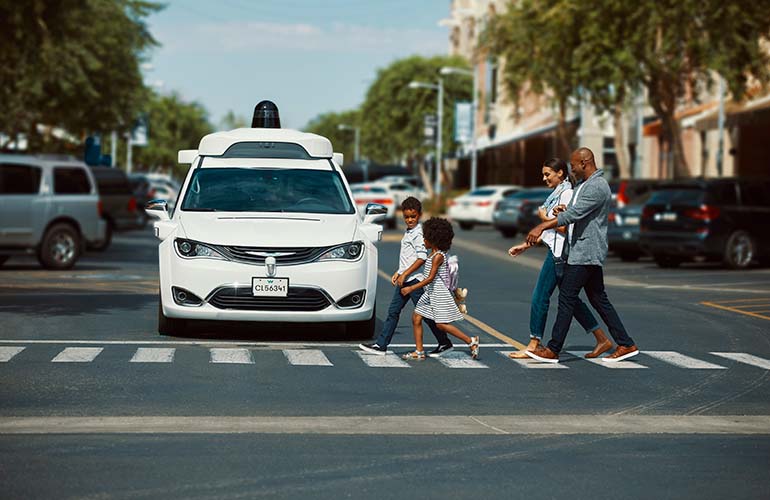|
Listen to this article  |

A Waymo robotaxi stopped at a crosswalk. | Source: Waymo
The United Nations (UN) announced that it will be extending the current limit for autonomous vehicle speeds from 60 km/h, around 37 mph, to 130 km/h, around 80 mph. The new regulations will be put into effect in January 2023.
The amendment was adopted by the World Forum for Harmonization of Vehicle Regulations, and applies to passenger cars and light duty vehicles. The amendment also allows vehicles to perform automated lane changes.
The World Forum for Harmonization of Vehicle Regulations is an intergovernmental platform, hosted by the United Nations Economic Commission for Europe (UNECE), that creates regulatory frameworks for the performance and safety of vehicles, their subsystems and parts.
The Working Party on Automated/Autonomous and Connected Vehicles (GRVA) developed the amendment, and were guided by UNECE’s framework on automated/autonomous vehicles. It builds on the experience countries have gained after the adoption of the UN Regulation on Automated Lane Keeping Systems (ALKS), which was the first binding international regulation on Level 3 autonomous vehicles, in June 2020.
Autonomous vehicles roll out around the world
The autonomous vehicle industry has been making great strides in getting self-driving cars on the road. Just last week, Cruise began charging passengers for robotaxi rides in San Francisco. The company has been testing in the city since Junce 2021.
Waymo isn’t far behind Cruise in its deployment in San Francisco. The company received a Drivered Deployment from the California Public Utilities Commission (CPUC) in March, at the same time as Cruise, but has yet to secure a Driverless Deployment Permit.
In the meantime, Waymo cars have been giving fully autonomous, paid rides in the Phoenix area since 2020.
In Germany, Mercedes-Benz launched sales of its Drive Pilot system for consumers on its S-Class and EQS models. The system is capable of operating at SAE Level 3, meaning it’s able to take control the speed of the vehicle and guide it within its lane. Drive Pilot can also take into account the route profile, events occuring on the route and traffic signs.
In China, Pony.ai recently acquired a license to operate an autonomous vehicle taxi service in the country. The company is gearing up to launch a fee-charging robotaxi service in Guangzhou, China, sometime this year.
Credit: Source link


Comments are closed.